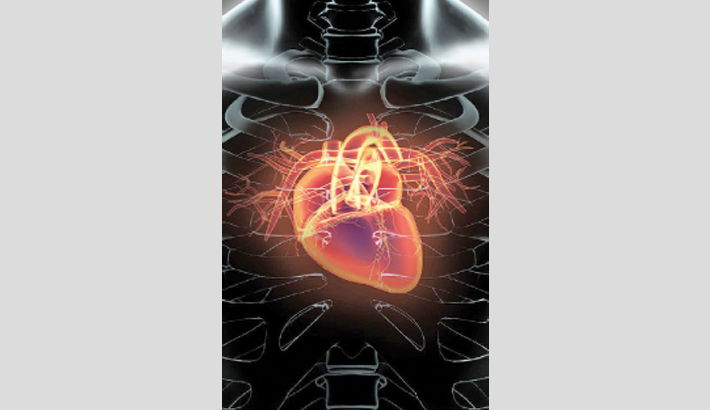Human Heart: The Innate Engineer | Abdullah Al Moinee

Human Heart: The Innate Engineer
Abdullah Al Moinee
[ www.daily-sun.com/printversion/details/264110/Human-Heart:-The-Innate-Engineer ]
Heart of human being maintains a uniform motion. Physician Erasistratus of Chios was the first to discover that the heart functioned as a natural pump like an inborn engineer with ample efficacy. In 1929, German surgeon Werner Forssmann examined the inside of his own heart by threading a catheter into his arm vein and pushing it 20 inches and into his heart, inventing cardiac catheterization, a now common procedure. Dr. Christiaan Barnard of South Africa transplanted a human heart into the body of Louis Washansky on December 03, 1967. In 1903, physiologist Willem Einthoven invented the electrocardiograph, which measures electric current in the heart.
Human heart designs a synergistic system which bolsters the life to survive by each of its pulse. The heart is a muscular organ in humans and other animals, which pumps blood through the blood vessels of the circulatory system. Blood provides the body with oxygen and nutrients, as well as assists in the removal of metabolic wastes. In humans, the heart is located between the lungs, in the middle compartment of the chest. The human heart has four chambers: two artias as upper chambers and two ventricles as the lower ones. From the right ventricle the heart pumps the blood into the lungs where CO2 is removed from blood and blood absorbs O2. The heart circulates blood through two pathways: the pulmonary circuit and the systemic circuit. In the pulmonary circuit, deoxygenated blood leaves the right ventricle of the heart via the pulmonary artery and travels to the lungs, then returns as oxygenated blood to the left atrium of the heart via the pulmonary vein. In the systemic circuit, oxygenated blood leaves the body via the left ventricle to the aorta, and from there enters the arteries and capillaries where it supplies the body’s tissues with oxygen. Deoxygenated blood returns via veins to the venae cavae, re-entering the heart’s right atrium. The oxygenated blood from heart rushes through aorta which is the largest artery in human body at a speed of 1.6 kilometers in an hour. However, by the time the blood eventually reaches the capillaries, it slows down.
Heart can continue to beat even when separated from the body, as long as it has an adequate supply of oxygen because the heart has its own electrical impulse. The heart begins beating at four weeks after conception and does not stop until death. The average adult heart beats 72 times a minute; 100,000 times a day; 3,600,000 times a year; and 2.5 billion times during an average lifetime. The fetal heart rate is approximately twice as fast as an adult’s, at about 150 beats per minute. The volume of blood pumped by the heart can vary over a wide range, from five to 30 liters per minute. The heart pumps blood to almost all of the body’s 75 trillion cells. Blood pressure at any given point in time is the pressure that the blood puts on the walls of the chambers of the heart. When the heart is relaxed, the pressure exerted by the blood is the diastolic pressure and when the heart is pumping, the pressure exerted by the blood is the systolic pressure.
It is mentionable that a wall of muscle called the septum separates the two sides of the heart. A double-walled sac called the pericardium encases the heart, which serves to protect the heart and anchor it inside the chest. Between the outer layer, the parietal pericardium, and the inner layer, the serous pericardium, runs pericardial fluid, which lubricates the heart during contractions and movements of the lungs and diaphragm. The heart’s outer wall consists of three layers: epicardium, pericardium & myocardium.
Many say that heart is an engineer remaining as the muscle in human body which does the maximum amount of physical work, generating around 1-5 watts of power. Even with 1 watt power, the heart can produce 2.5 gigajoules of energy in 80 years. While the quadriceps can produce 100 watts for a few minutes, an output of one watt for 80 years is equal to 2.5 gigajoules. The energy created by the pumping action of the heart in a human body in one day is enough to drive a truck for a distance of 20 miles. Actually human heart is designed to generate the fuel for life and to drive the systems of human body in a natural way.
Moinee, A. Al. “Human Heart: The Innate Engineer” The Daily Sun. 8(3). 26 Oct. 2017. The Hood. 7(31).
